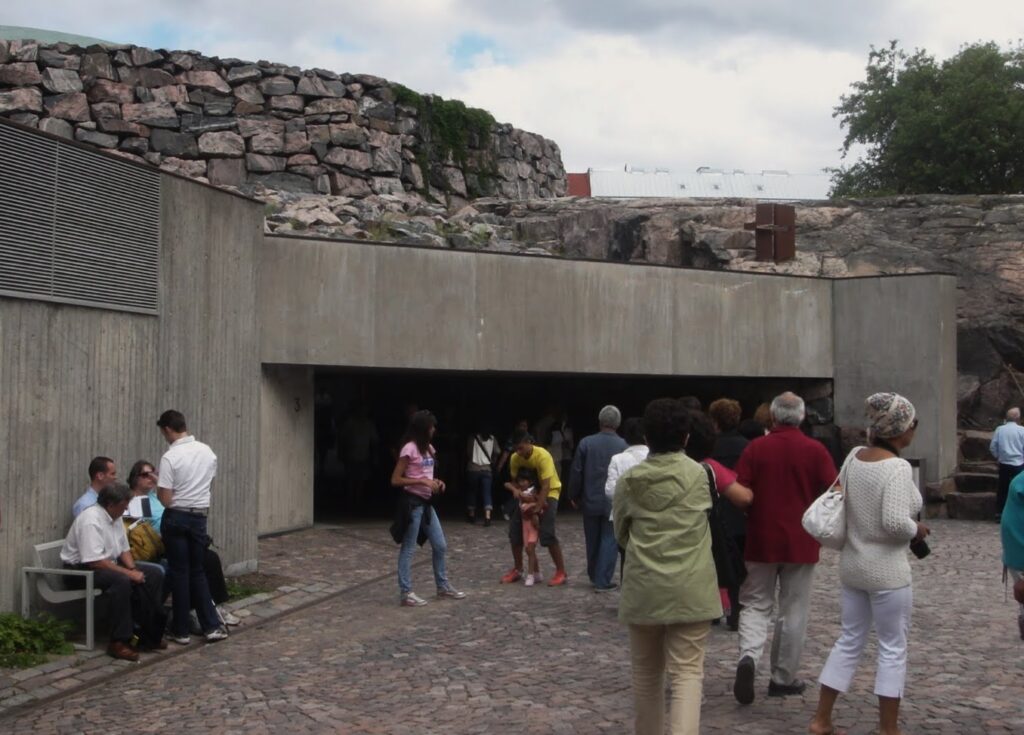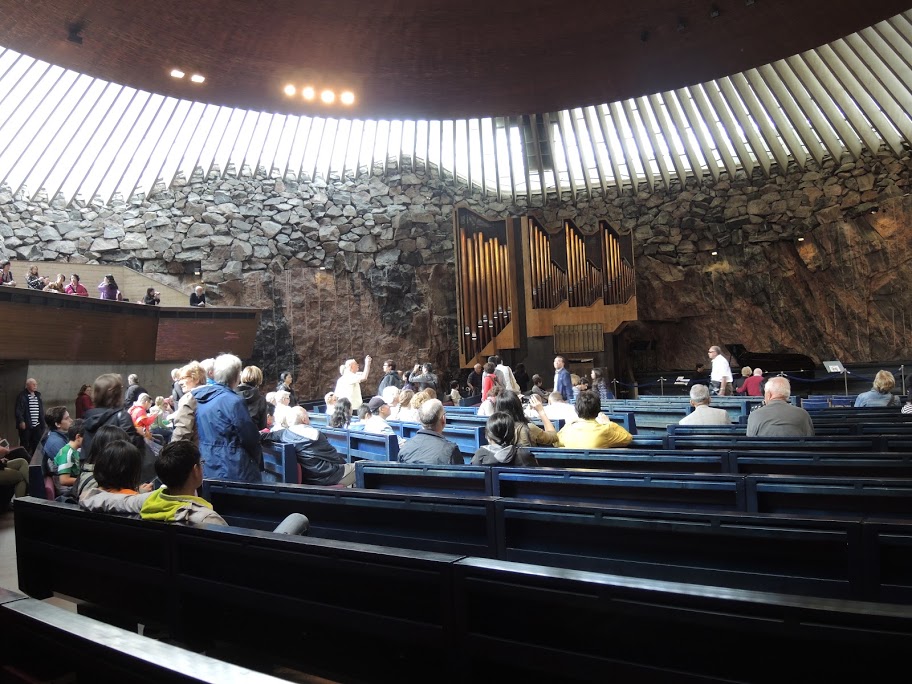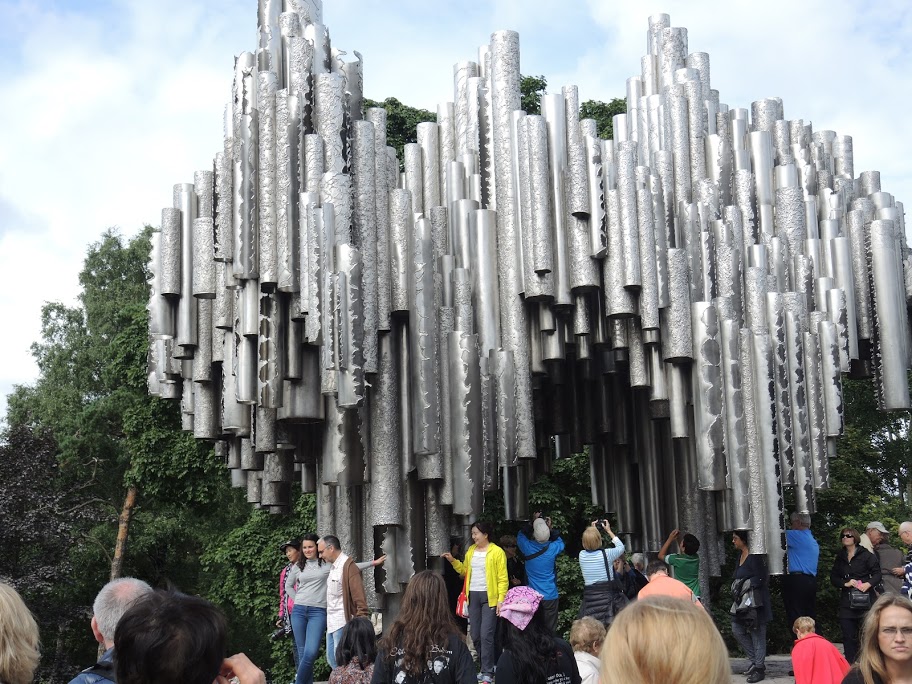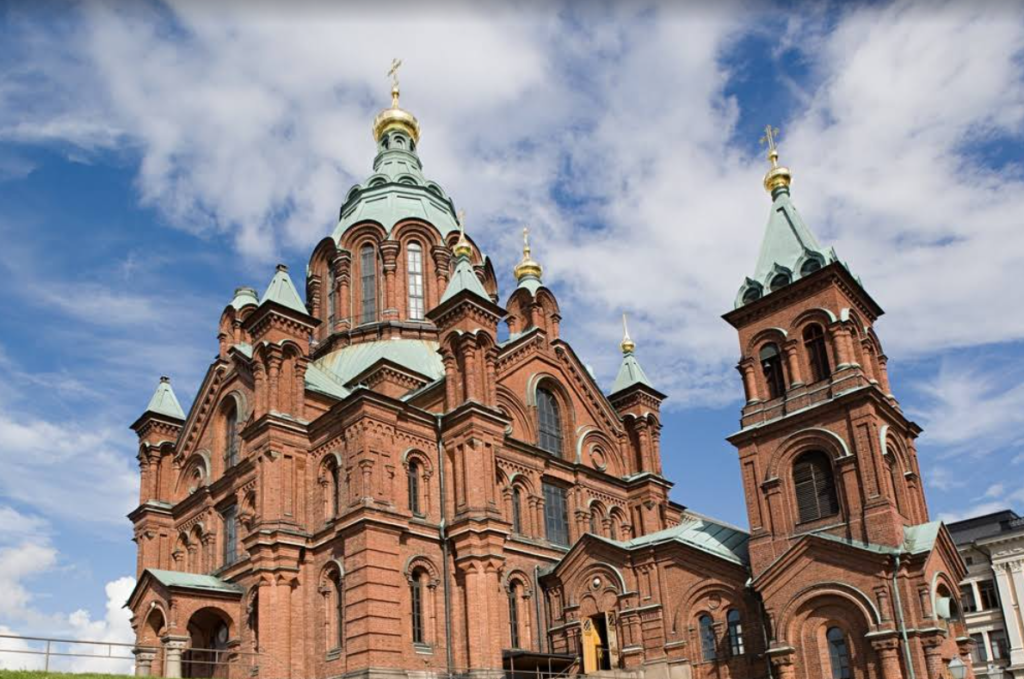I’ll open this post with a reminder and a somewhat self-congratulatory comment. I want to remind you that the reason this section is called Nordic Cities and Me rather than Scandinavian Cities and Me¬†is that Finland while Nordic is not Scandinavian. Only Denmark, Norway, and Sweden comprise Scandinavia.
When writing about my visits to cities that already have detailed posts elsewhere in this blog I’ve been condensing those longer posts and providing something of a Reader’s Digest version. The self-congratulatory comment stems from reviewing my posts about Helsinki. I was impressed with how much I was able to see and experience – at least externally given that I was there for about the length of a standard eight hour workday. Nevertheless, here is my
Reader’s Digest Version of my visit to Helsinki.
If you visit Senate Square in Helsinki, you might be surprised to see this statue
of Tsar Alexander II. Alexander was the Grand Duke of Finland from his ascension to the throne in 1855 until his assassination in 1881 and is rather beloved by the Finnish people. Finland is a relatively young country having been batted about for centuries mainly between Sweden and Russia. (It declared its independence on 6 December 1917. The Russian Republic, France, Sweden, and the German Empire were the first to recognize it on 4 January 1918.  The U S was something of a laggard. It was the 20th country to grant full recognition and did so on 7 May 1919.)
However, unlike the Swedes, who were quite chauvinistic and somewhat brutal, Alexander was comparatively benevolent toward the Finns. Among the actions he took during his reign were elevating Finnish for the first time to the status of an official language and allowing the Finns to have their own currency as well as their own Diet (or Parliament). These actions made him as popular a figure in Finland as a foreign ruler might be.
Another one rides the bus.
A few people from the Norway-Sweden group had taken the overnight ferry from Stockholm to Helsinki and our small group had a van tour of the city that began when we disembarked. Our first stop was the renowned Temppeliauko Church colloquially referred to as the Rock Church. The church was completed in 1969 and designed by the architect brothers Tuomo and Timo Suomalainen who, it is said, drew their inspiration from the shape of Helsinki’s archipelago.
The church is blasted out of solid granite, has a rather unassuming entrance,
and gives the feeling of being mostly underground. However, the design allows it to be suffused by natural light through a 360 degree skylight encircling the upper reaches of the structure. The excellence of the acoustics provided by the wound copper wire ceiling and exposed granite walls became immediately evident when we entered the building and heard the piano soloist playing just in front and to the right of the altar and organ.
From here it was a short ride to the park and monument that honors the great composer Jean Sibelius who is considered by many to be the national composer of Finland. While Sibelius has an impressive oeuvre that includes eight symphonies, the Finns themselves probably esteem him more for his tone poems Finlandia and the Karelia Suite and his many works that drew inspiration from the Finnish epic poem Kalevala. Much of Sibelius’ work had nationalistic overtones.
After the bus deposited us in Senate Square, the clouds that had been ominously thickening through the morning unleashed a rather ferocious downpour that had us sprinting for cover in various directions. As I wrote in my original post, the rain would continue through the day “more mittently than inter.”
The Harbor Market Square has both an outdoor and an indoor market and two factors enticed me to the latter. The first was a simple desire to be out of the rain. The second was that the indoor market – both its exterior and its interior – were strongly evocative of the neighborhood municipal markets in Baltimore, the city of my childhood. I knew I’d do more than snack within.
A few hours on foot.
As I noted in the introduction to this post, I spent a total of about eight hours in Helsinki and by the time I finished my lunch at the market I had about three hours remaining before I’d have to board the ferry for the return trip to Stockholm and my flight home. Thus, I was able to see lots of outsides but no insides beginning with the Uspenski Cathedral.
(Note this photo is an upload from Google Maps because it’s better than the photos I was able to take.)
Its construction began in 1862 during the reign of Alexander II who is commemorated by a plaque at the rear of the building. Sitting on a hill in the Katajanokka neighborhood overlooking the harbor and downtown area, the Uspenski Cathedral draws more visitors annually than the Lutheran Helsinki Cathedral on Senate Square (although the latter is probably more famous architecturally) and likely competes with the Temppeliaukio as the most visited religious landmark in the city. It’s reported to be the largest Orthodox church in Western Europe.
From there I was off to see the Central Railway Station because it was designed by Eliel Saarinen and was the one of two buildings in Helsinki I knew he’d designed that was within walking distance. My walk was slowed by two more brief but umbrella obliterating downpours as I walked along the famous shopping street, Esplanadi.
Saarinen chose a Nordic interpretation of Art Nouveau architecture for his design which¬† is built almost entirely of Finnish granite. Among the station’s most noteworthy features are the clock tower and the two pairs of stoically expressioned statues that flank the main entrance.
Eliel moved to the United States in 1923 and his first major design was the 37 story Gulf (now JPMorgan Chase) Building which was the tallest building in Houston, Texas until the mid 1960s. Eliel’s son Eero designed the main terminal building at Dulles Airport and, as I’m sure you recall, the Jefferson National Expansion Memorial in Saint Louis that we Americans call the Gateway Arch.
I finished my day¬† at another famous Helsinki landmark, the Havis Amanda Fountain which is back along the Esplanadi. Here’s what I wrote in my original post:
The statue was originally cast in 1906 by Ville Vallgren a Finn living in Paris. His model was a 19 year old Parisienne. She was installed in her granite fountain in her present location in 1908. Vallgren intended the vision of the mermaid rising from the water to represent the birth of Helsinki. In the fountain, she’s surrounded by four seals as she stands on a bed of seaweed in a rather languorous pose intended to evoke a farewell to the water.
She was unveiled to some controversy. In 1906, Finland, with its own Diet though not independent, had been the second country in the world to introduce universal suffrage (New Zealand was the first in 1893) and some thought the depiction of a nude woman (not to mention a nude French woman), on a pedestal in what some saw as a seductive pose was little more than a belittling sexual objectification of women. Over time, though, attitudes began to change and the Finns came to tolerate her. Then they began to see her more along the lines of Vallgren’s intent as representative of the city’s spirit.  Today, many consider her the most beautiful and important artwork in Helsinki.
This sort of change in people’s perception demonstrates, at least to me, why we need to allow artists great latitude in their creativity. Consider this some food for thought while you await my recap of the 1952 Winter Olympics in Oslo.







